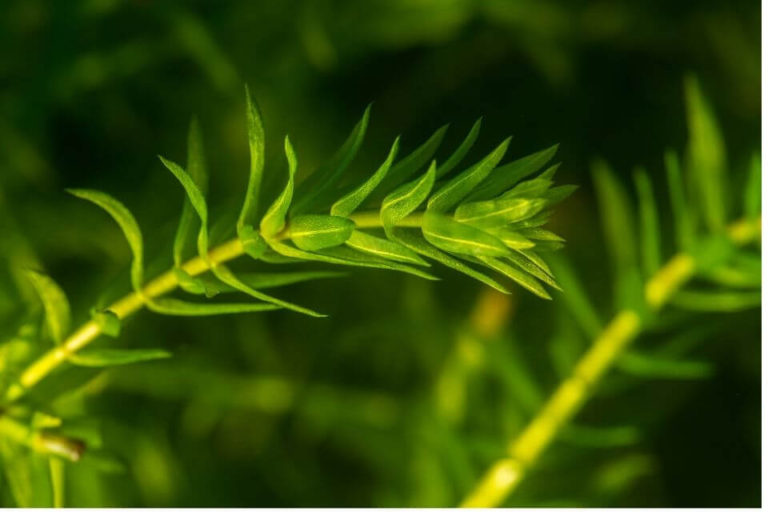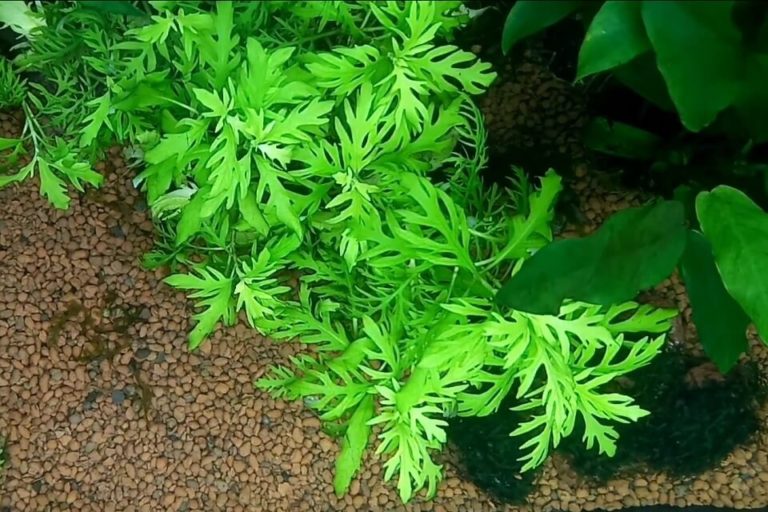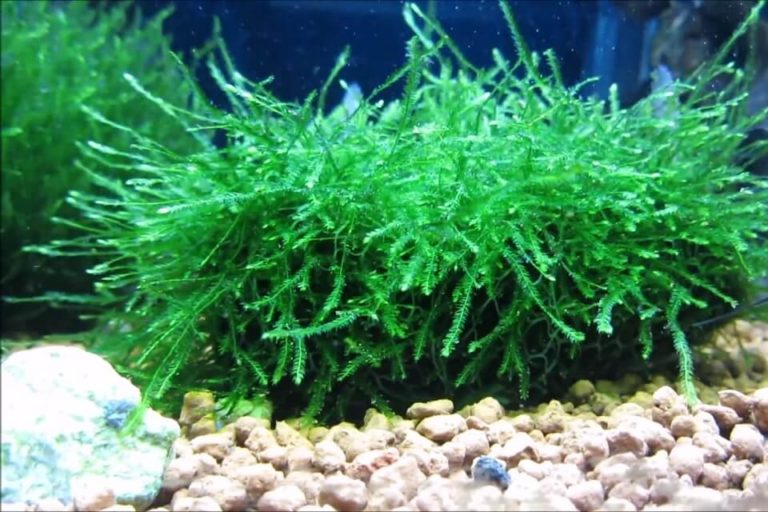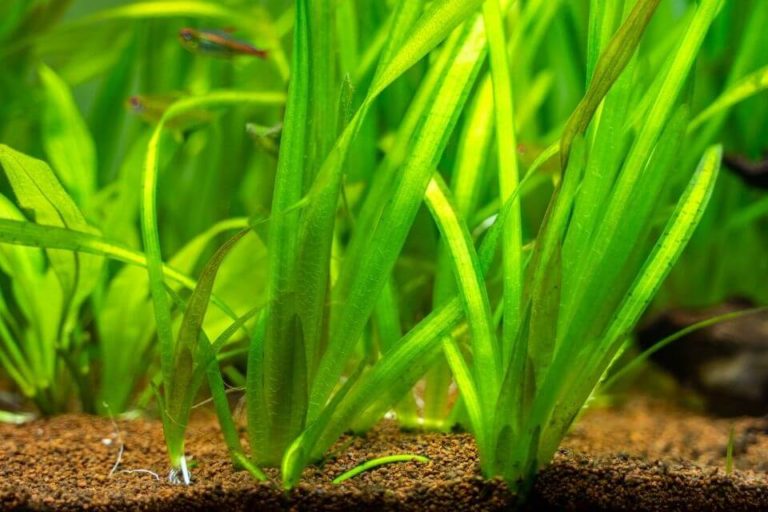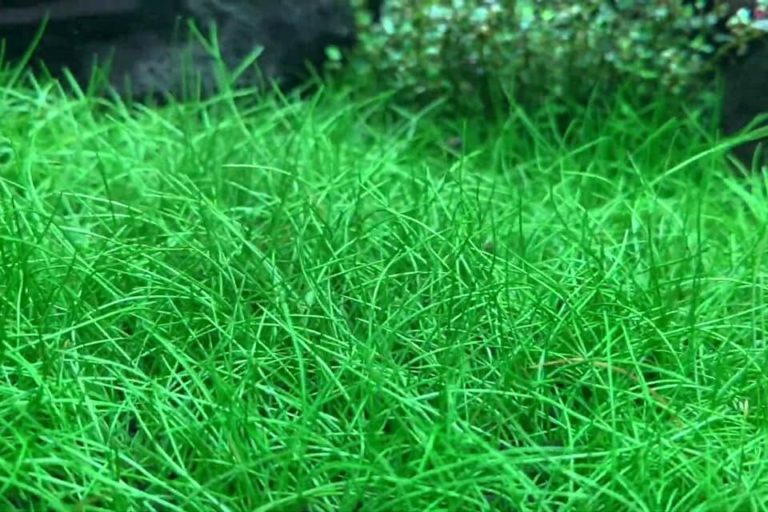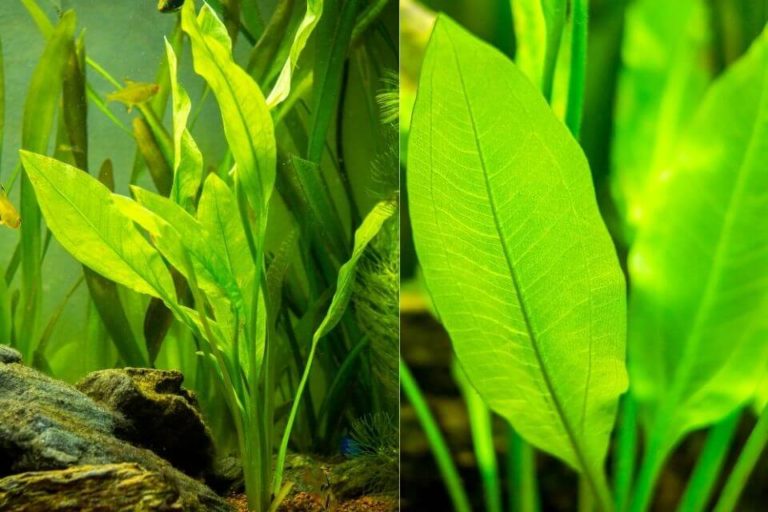The Best Floating Aquarium Plants For Your Freshwater Aquarium

Are you ready to create a freshwater tank that will display a lively natural look? Is the focus in your current tank just about the fish other than a healthy natural habitat? You need to pay attention as we discuss Floating Aquarium Plants that will help you achieve these goals and more.
Setting up a freshwater aquarium that will work perfectly for the fish you target to keep is never a straightforward task. There are many factors that you need to consider. In most cases, most of the focus is channeled to picking the right fish to keep in the aquarium.
In the process, you may overlook aquarium plants, only to realize that they were supposed to be in the initial plan when all other components are set up.
Surprisingly, there is a wide variety of Floating Aquarium Plants that you can add to your tank. Picking the right ones can also get challenging. In this guide, we will focus on floating aquarium plants and we’ll explore the best plants in this category that you can go for.
Floating aquarium plants have specific characteristics and effects that you may never achieve with any other aquarium plant species. There are tons of benefits you will enjoy when you include Floating Aquarium Plants in your tank setup. Let’s kick start this article by discussing some of these benefits.
The Benefits Of Floating Aquarium Plants
– Add A Natural Look And Feel To An Aquarium
There is no doubt that Floating Aquarium Plants introduces a wild feel and look to a freshwater tank no matter its occupants. As much as this simulates the natural habitats’ conditions and keeping the fish always happy.
It also adds vibrancy and life to space where the planted aquarium is kept. The healthy, realistic look is definitely a plus for anyone looking to rejuvenate that special space in a home.
– Filter Bright Light
The other impressive characteristic of Floating Aquarium Plants is that they filter light and colors, making life easy for low light fish variants in your freshwater tank. The shade you want in your tank should be one of the major guiding factors when deciding on the extent of surface you want your Floating Aquarium Plants to take up.
Some Floating Aquarium Plants are easy to thin out, meaning that you can easily control the amount of light entering your tank to respond to the needs of the creatures you host in there at any particular time.
– They Keep The Water Fresh And Clean
The goal of every fish keeper is to keep the tank water in the required quality, as this is the only way the occupants of your tank will live comfortably. Even the hardiest fish requires a clean tank and high-quality water to attain optimum health.
There are effective ways to sort out the poor water conditions issue, such as the use of filters, but when Floating Aquarium Plants are added to your fish tank setup, they make the environment even cleaner while offering other great benefits.
Besides consuming waste as nutrients, plants also oxygenate the water, making the environment very supportive for any freshwater aquarium fish. With good Floating Aquarium Plants, your tank filters will be left with very little work to handle.
– Provide Shelter And Hiding Places
As mentioned above, Floating Aquarium Plants superbly simulate natural habitat characteristics, such as providing shelter. Also, well-grown floating plants will offer hiding places where your shy fish can run to when they feel threatened.
The sense of power and comfort that these plants bring to easily frightened fish reduces stress and dramatically improves their quality of life.
– Source Of Food
Floating plants acts as a traditional meal that can give your fish more nutrients and vitamins. When it comes to diet, the reality is that most capture fish are omnivores. This means that most of them will snack on the floating plants you have included in their tanks.
If you have fish that spend most of their time at the upper section of the tank, it would be perfect to add Floating Aquarium Plants as they will be easy to access as food. If you want to keep a noticeable coverage of these plants, you need to avoid devouring and highly aggressive fish in the tanks.
– Easy To Care For
You may overlook this benefit, but it may be the favorite part of growing Floating Aquarium Plants. Remember, you will, in most cases, have fish to look out for and hence you don’t need plants that add to the workload.
These plants are excellently low maintenance and they will give you the smoothest experience growing them. Other than the occasional pruning, no extra effort will be required to maintain most Floating Aquarium Plants.
– Fast Growth Rate
The amazing part of what makes Floating Aquarium Plants is their exceptional growth rate. With just a small batch of the right plant, you can have your tank entirely covered and all green. Note that Floating Aquarium Plants with very fast growth rates come with an added maintenance practice of trimming. Knowing what exactly you want in your tank can help a great deal.
Keeping these benefits in mind, how do you know what floating plant is best for you? Keep reading to find out.
Before Selecting Floating Aquarium Plants
It is worth considering the below-discussed facts before you make a decision when choosing Floating Aquarium Plants for your freshwater aquarium. You must consider tank size, occupancy, lighting, and maintenance requirements beforehand. Let’s see in detail.
– The Occupants Of The Aquarium
It is good to know what fish you will keep in your tank before you go selecting the floating plants that you will include. If, for example, you are setting up a breeding tank, plants with roots would be ideal as they will provide shelter for the newborn fish.
Similarly, if waste is a significant problem in your tank, it would be better if you went for fast growers as they will help neutralize the toxic materials at a quicker rate.
– Size Of Your Fish Tank
Smaller tanks require less coverage and hence smaller species of floating plants would be your best option. Note that overcrowding a small tank can take up most of the fish living space leading to stress and sprouting of health issues.
On the other hand, larger tanks require fast-growing plants to cover the extensive free space. It is, therefore, critical to know the capacity of your tank before purchasing floating aquarium plants.
– The Lighting Required
As mentioned above, floating aquarium plants filter the light that gets into the tank, and hence it is essential to know the light requirements of the fish dwelling in the tank before you purchase these plants.
Choose plants that will allow just enough light into the tank. Keep in mind that even if you are looking to introduce a shade to the aquarium, your floating aquarium plants should not be blocking too much light to the point that the life below is not sufficiently nourished.
– Kind Of Maintenance Required
Generally, floating aquarium plants are easy to care for, but there are some crucial details you will need to keep in mind about maintenance. First, if your tank is hooded, it is vital to maintain a high humidity level above the water’s surface as it prevents the leaves of the plants from dehydrating and browning.
For a tank with powerful water movement, you should only include plants that are strong enough to hold up the currents. If you have fragile plants in an aquarium with very powerful currents, the delicate plant leaves with be bruised and the plant will break up within no time.
Our Recommended Best Floating Aquarium Plants
There are a wide variety of known floating plants that have been identified from different parts of the world. But, there are a few floating plant species that we keep in fish tanks. Let’s review more popular Floating Aquarium Plants as below.
1. Hornwort (Ceratophyllum demersum)

| Quick Facts: | |
|---|---|
| Common Names | : Hornwort, Rigid hornwort, Coontail |
| Scientific Name | : Ceratophyllum demersum |
| Family | : Ceratophyllaceae |
| Origin | : Common in any continent |
| Care Level | : Easy |
| Growth Rate | : Fast |
| Size | : Up to 10 foot |
| Propagation | : Side shoots |
| Placement | : Floating |
| Lighting | : Medium |
| Minimum Tank Size | : 15 gallons |
| Temperature | : 59 °F - 86 °F (15 °C - 30 °C) |
| Water Hardness | : 5 - 15 dGH |
| Water pH Level | : 6.0 - 7.5 |
| CO2 Level | : Medium |
Hornwort is a hardy and easy-to-care-for freshwater aquarium plant that can be planted in the substrate or left free-floating on the water surface. This plant species is native to Britain but is adapted to survive in a wide range of tank water conditions.
The plant grows very fast (can reach up to 6 feet in length when fully grown) and so you should be prepared to trim it from time to time to ensure it does not block the required light into the tank. With its fast growth rate, Hornwort is superb at improving water quality by taking up harmful waste products as nutrients. This plant can also help neutralize algae and oxygenate the water.
The plant is aesthetically pleasing and will add that perfect natural look to your aquarium. It forms densely packed structures that are dark green in color. The structures also provide shelter to fish that like to hide.
Seasoned aquarists recommend that you buy one bunch per square foot of your tank. The plant will be easy to grow and it will hold up well even in extremely cold weather.
They are a few drawbacks of growing this aquarium floating plant. First, the plant sheds needle-like leaves that may clog up the filtration system you have installed in your tank. Also, if there is too much light in the tank, the plant branches may grow too long to affect the tank’s aesthetic properties.
Hornwort is compatible with most of the freshwater fish species that you will keep in your tank. One fish species, the goldfish, is fond of grazing on Hornwort, eating most of the leaves and leaving the plant somehow bare.
You can go for other plant species discussed in this guide if you want to keep Goldfish in your tank.
2. Duckweed (Lemnoideae)

| Quick Facts: | |
|---|---|
| Common Names | : Duckweed, Water lentils, Water lenses |
| Scientific Name | : Lemnoideae |
| Family | : Araceae |
| Origin | : Africa, North America, and Asia |
| Care Level | : Easy |
| Growth Rate | : Fast |
| Size | : 0.3 Inches |
| Propagation | : Flowering |
| Placement | : Floating |
| Lighting | : Medium |
| Minimum Tank Size | : 5 gallons |
| Temperature | : 60 °F - 90 °F (15 °C - 32 °C) |
| Water Hardness | : 1 - 15 dKH |
| Water pH Level | : 6.0 - 7.5 |
| CO2 Level | : Medium |
Endemic to regions of Africa, North America, Asia, and Europe, Duckweed is a unique plant with a striking appearance. It is known to be the world’s smallest flowering plant. The duckweed is a well-known aquarium plant that is readily available in aquarium shops worldwide.
The plant only exists in a free-floating form and is known to form clumps with its small clover-shaped leaves covering the water’s surface. Duckweed looks stunning when viewed from above, but the view is even better below the surface.
When grown in warmer conditions, this plant grows at a rapid rate. For this reason, this plant is not suitable for small tanks or a tank that needs a lot of light. But you can easily grow this plant in a small tank but you need to control spreading it.
This plant is also known to grow even outside the tank and hence keeping a lid on your tank can help prevent this. Note that overgrowths are not that straightforward to remove and the best solution is to keep your aquarium closed.
No much effort is needed to maintain duckweed as it can effortlessly handle a wide range of light and water conditions. Duckweed will efficiently balance the minerals in the tank, keeping conditions highly life-supporting.
All these plus points make this plant the first choice for many aquarists and aquarium works hobbyists.
3. Java Moss (Taxiphyllum barbieri)

If your primary target is to have a plant that will require very little maintenance, then the Java moss will serve you right. A common belief, especially, in new aquarists, is that the plant can only be planted in a substrate is actually wrong as it can also be free-floating.
The appearance of this plant depends on the look you want to achieve in your tank. Trimming the plant can give this plant various looks to match your expectations. Generally, the plant has no roots but succulent stems and small oval leaves.
Java Moss will grow in about any water condition but prefer slightly acidic water. Warm water conditions also increase high its growth rate.
To float this plant, you will need an anchor such as a piece of cork or any other surface that the plant will easily attach to. It is good to note that the platform formed is not very strong and hence you have to be strategic in how you set up your tank.
Keep any powerful intakes at a distance to prevent breakage of the support buoy or the sucking up of the plants. It would also help if you kept calm and non-aggressive fish that cannot devour the carpet-like floating structure formed by the floating Java Moss.
Although dubbed an aquarium plant, Java moss can also be found growing naturally on damp terrains, especially in the Southeast Asia region.
4. Water Sprite (Ceratopteris thalictroides)
![]()
This is another anchored aquarium plant that perfectly qualifies to be a floating variety. Naturally, the plant thrives in the slow-moving waters of India.
The floating setup of the water sprite is more appealing than the anchored variety. It forms a web-like pattern with its thin leaves, creating an eye-catching scenery.
One notable characteristic of this aquarium plant is that propagation occurs naturally through adventitious shoots. Even with this, you can also get new plants by obtaining cuttings from the main stem.
The cuttings can be planted in the substrate to fill up any free space in the tank or left to float in the water to add to the web-like pattern.
For this plant, you need to be a little more focused on lighting and fertilization. The plant thrives on medium to bright light and in water with sufficient nutrients. If these conditions are not met, the plant’s leaves may start to curl inwards and turn brown.
The Water Sprite is ideal for including in a tank with shy fish that need to hide when the environment seems unsafe. The safety blanket that the plant creates at the water surface reduces stress and improves the fish’s quality of life in the tank.
5. Amazon Frogbit (Limnobium laevigatum)

No floating plant will create a healthy, classic, and authentic natural look in an aquarium-like the vibrant Amazon frogbit. The plant boasts broad leaves, long branching roots, and a large rosette that are highly aesthetically pleasing.
The length of this plant is excellent for foraging fish as it provides enough space for the fish to explore. The broad leaves of the plants offer great coverage and hence would work well for fish species such as bettas that like to hide in dark areas.
Avoid Amazon frogbit plants in a tank with bottom dwellers that require a considerable amount of sunlight.
This plant is easy to maintain as it is well adapted to surviving in various water conditions. In steady lighting conditions, the plant’s growth rate is steady.
If you are a beginner or seasoned aquarist looking for a plant that will look great, offer enough shade, and demand very little hassle to maintain, the Amazon Frogbit is an excellent option to settle for. You can test your aquascaping skills with this plant, as its structure allows for that.
6. Dwarf Water Lettuce (Pistia stratiotes)

The Dwarf Water Lettuce is a highly invasive plant that is only recommended to be grown in Aquarium where its growth can be monitored. As the name suggests, the plant has lettuce-like leaves that form a cabbage-like structure when free-floating.
The Dwarf Water Lettuce plant is easy to grow and it easily self-propagates, covering the water surface in an accelerated manner. The attractive mat covering creates ideal hiding spots for fry and relatively small fish.
It is a fairly hardy plant that will thrive in almost all freshwater tank conditions. The plant, however, requires a proper humid environment to thrive. It is easy to trim this plant and there is no way its growth will get out of hand with focused care.
It is the seamless, natural, tasteful, and subdued look it adds to a tank for this plant. Remember, this plant should never be allowed into the natural ecosystem as it is hard to remove.
7. Water Wisteria (Hygrophila difformis)

Native to India’s shallow and warm waters. The Water Wisteria is arguably one of the most popular floating aquarium plants you will find in the market. Water wisteria is a hardy plant that does great in well-lit tanks.
When you decide to add this plant as free-floating, the roots will hang down into the water, creating a mesmerizing look. In a well-lit tank, the look is undeniably eye-catching.
Water wisteria has long leaves and sturdy stems that create excellent hiding places for the fish in the tank. When conditions such as tank size are supportive, water wisteria can grow up to 20 inches high and 10 inches wide.
The plant grows fast and if you are not careful, it may take over the tank within a very short period. Trimming it occasionally ensures that the tank is not too cluttered at any particular time.
Devouring fish such as goldfish, dollars, and snails should not be hosted in a tank with floating Water Wisteria plants. These creatures love snacking on this plant and will deteriorate it within no time.
8. Anacharis

Anacharis is an aquarium plant that you will not find a hard time keeping alive with experience or not. The plant will survive in various temperatures and is not highly demanding when it comes to light.
The plant is highly effective in oxygenating the water in your fish tank and hence it works well for fish that are highly sensitive to poorly aerated water. Since this plant effortlessly grows large, it is recommended to trim it to match your tank’s size.
The plant is prone to fish nibbling due to its relatively larger structure, but thanks to its resilient characteristic, the plant will still survive even if this periodically occurs.
Final Thoughts Of Floating Aquarium Plants
Hopefully, you’ve enjoyed this post for our top picks of Floating Aquarium Plants. We are pretty sure that you now have a reliable resource you can turn to anytime you are stuck choosing the perfect plants for your freshwater tank.
As seen from this guide, an aquarium is not all about the fish but also the entire natural habitat created by all the additions, including the plants.
The Floating Aquarium Plants discussed here are easy to keep, grow and maintain. It will not give you a stressful experience even if you are a beginner. Floating Aquarium Plants are excellent tank water oxygenators and cleaners and it would be unfortunate if you did not tap into some of these simple but very crucial benefits.
Head to your favorite aquarium shop today and acquire a healthy batch of the Floating Aquarium Plant that pleases you in this guide. You can as well order the plants from online aquarium pet stores if they are unavailable locally.


